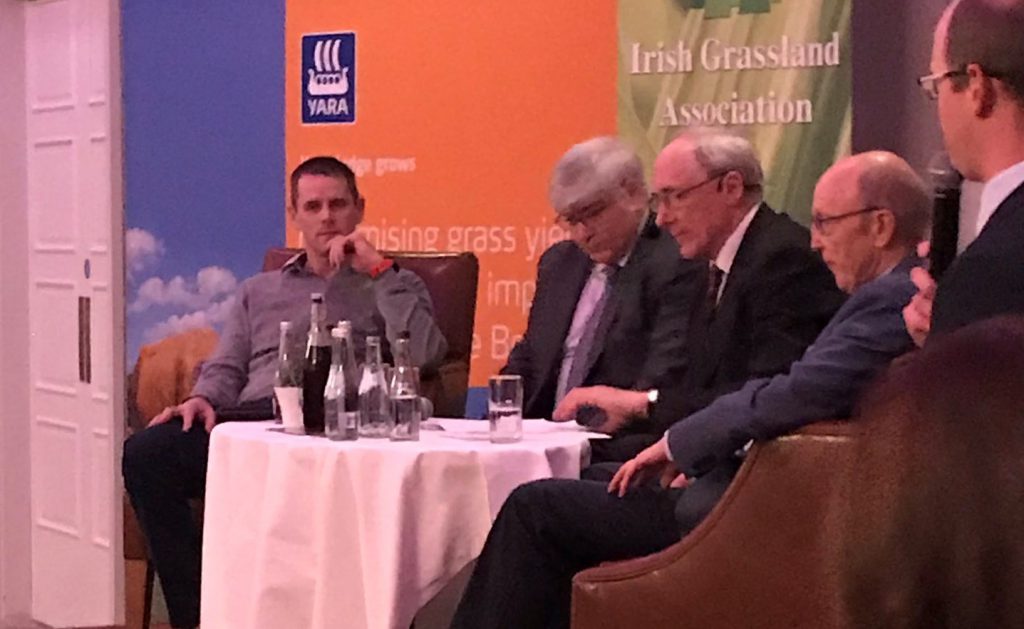The past decade has provided many opportunities and challenges for Irish farmers – particularly those involved in or with a grá for dairying.
The unshackling of milk quotas in 2015 provided an obvious opportunity for existing dairy farmers to increase cow numbers, whilst also paving the way for new entrants into milk production.
One such man was Co. Wicklow based farmer John Kelly who embarked on his dairying journey in 2013 prior to quota removal.
John was joined on a panel at the pre-conference networking event – organised as part of the Irish Grassland Association Dairy Conference – by pig farmer Pat O’Keeffe and potato and cereal grower Ned English.
John, who was born in Northern Ireland, shared the ups and downs of his successful path into milk production, whilst also highlighting the challenges facing him down the road.
After trying his hand at numerous jobs and enterprises over the years, along with studying at Harper Adams University in the UK, John returned to the family farm that his father purchased in 1994.
Starting off with 35ac of his own, John purchased 70 ewes and started his own sheep enterprise.
In the years that followed, he became a monitor farmer where he learned many new skills such as grass measuring, whilst all the time growing the flock to its peak at 700 ewes.
However, it was at a dairy discussion group meeting where John was first exposed to the potential margins associated with dairy farming.
“When I saw the difference in margins from a dairy farmer and what I was making, I couldn’t believe it. I knew enough about sheep and how good we were doing it and I would have never got anywhere near the margin – not even close,” he explained.
“That was the moment. Although, 10 years ago I was probably at a sheep conference saying I would never ever milk a cow or stand in a parlour,” he joked.
John – who is married with five children – started with 50 cows, but now currently milks a 250-head herd of cross-bred cows under a spring-calving system, with calving due to commence on February 12.
In 2019, the herd done 480kg of milk solids feeding 700kg of concentrate.
“We are conscious of what drives profit and we are always trying to drill down into that all the time,” he added.
However, while the last decade has paved the way for dairy expansion, new challenges have emerged on the horizon which will have to be addressed going forward. One challenge in which John expressed concern was in relation to the environment.
“We’re not even having the same conversation as environmental people; we are only talking about economic efficiencies; that does worry me.
“There is a lot coming at us quite fast, but as an industry, we don’t ask ourselves enough hard questions about ‘are our cows producing too many emissions?’
“And, another thing, we need to convince the European consumer and – to me – we’re not doing that.
We don’t sell the positives enough. As farmers, we should take more control and sell ourselves better, while facing up to the challenges.
“There is a tendency there to ignore the challenges, but if we address these, everything else is positive,” John added.
Another important factor for John is maintaining a good work/life balance.
“My quality of life with my family is very important and we don’t to get involved with stuff that doesn’t benefit us.
“I value my time; at 5:30pm I’m with the kids or I go do some sport myself and that is also very important to us,” he concluded.


